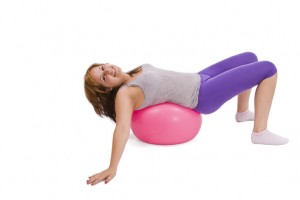(Editors Note: The new articles that will come up in the Health and Fitness News section of Club Solutions Magazine Online, “Your Members Health,” will give you the opportunity to take an article and photo we’ve provided you and send it out to your members in your e-mail blasts or on your website at no charge. Just a little something extra to make your job a lot easier.)
Love handles. A challenge to get rid of for almost everyone.
Understanding anatomy: You have oblique abdominal muscles located on each side of the rectus abdominis, the large front muscle of the torso. The external obliques attach to the ribs and the pelvis. The muscle fibers run in a diagonal direction and form a “V” shape.
Beneath the external oblique muscles lie the internal oblique muscles that form an inverted “V” shape. Both sets of oblique muscles are involved in side bending, trunk rotation and flexing the ribcage toward the hipbones.
External oblique muscles contract on the opposite side of the movement. When you rotate to the left, the external oblique muscles on the right assist the movement. Internal oblique muscles contract on the same side as the movement. Rotating to the left activates internal oblique muscles on the left. Make sense?
Remember that the amount of muscle one sees in the front also extends all the way around the sides to the lower back.
What to do about them: Visualization is key. Think of the diagonally crossing fan-shaped muscles as a girdle. To increase awareness and heighten muscle activation think of “X marks the spot.”
Try this exercise: You’ll need a Swiss ball and an exercise mat. Lie down face up. Bend your knees and put the ball under your calves so that your legs form a 90-degree angle.
Put your arms on the floor at shoulder width for optimal support or alongside your body for a greater stability challenge. Now, use your oblique muscles to roll yours legs towards each side of your body. To keep the tension constant, use a limited range of your body. Rotate your legs sideways only as far as you can while keeping your pelvis and lower back firmly on the floor. Pausing at the point of peak contraction will intensify the activation of the stabilizer muscles.
If this feels easy, refocus your attention on moving from your core muscles. In doing so you’ll feel how much resistance leg weight proves. Keep your belly button pulled down to the floor to anchor your pelvis and use your oblique muscles to slowly roll the ball.
Try to do two sets of eight to 12 reps every other day.









